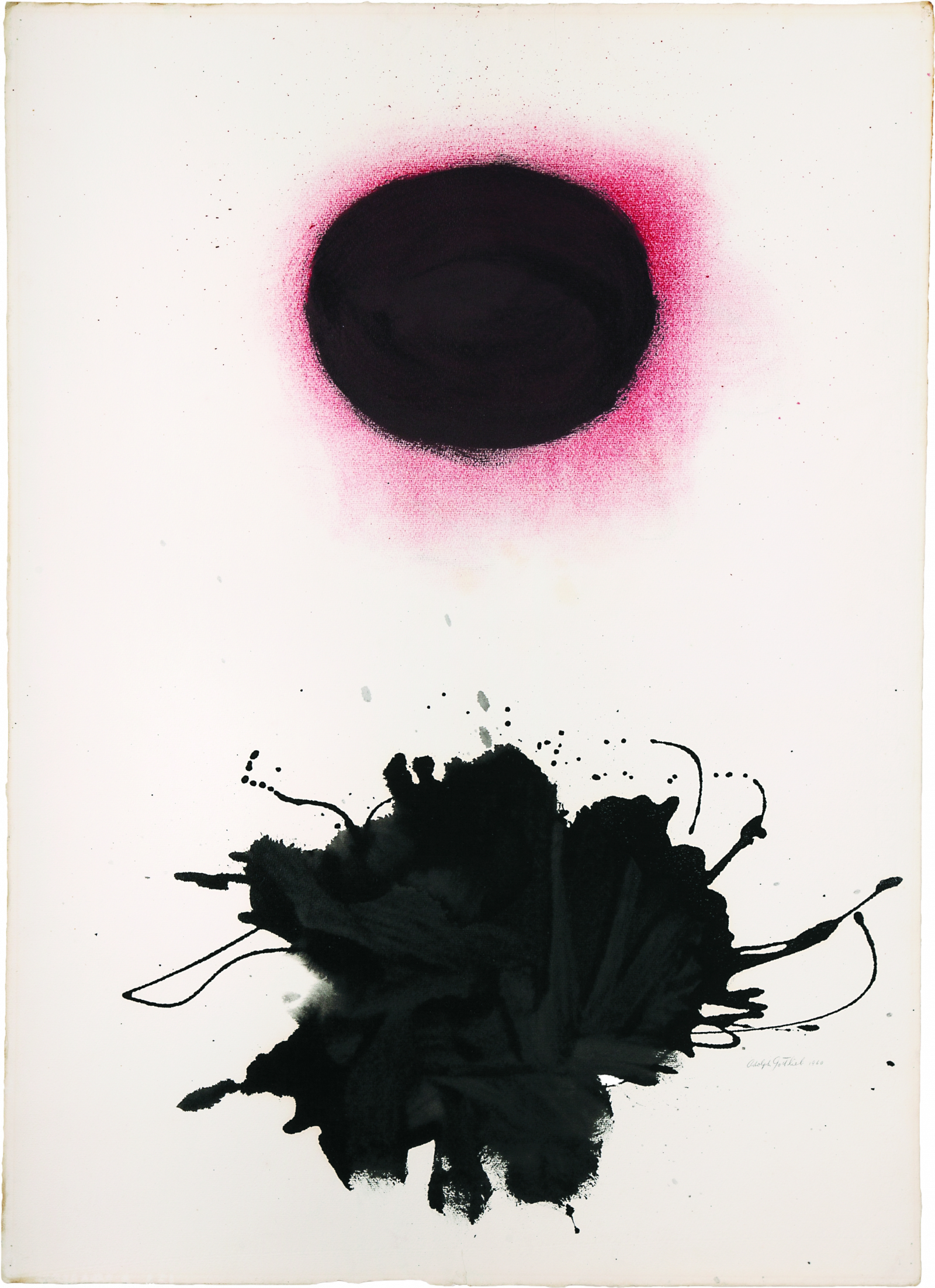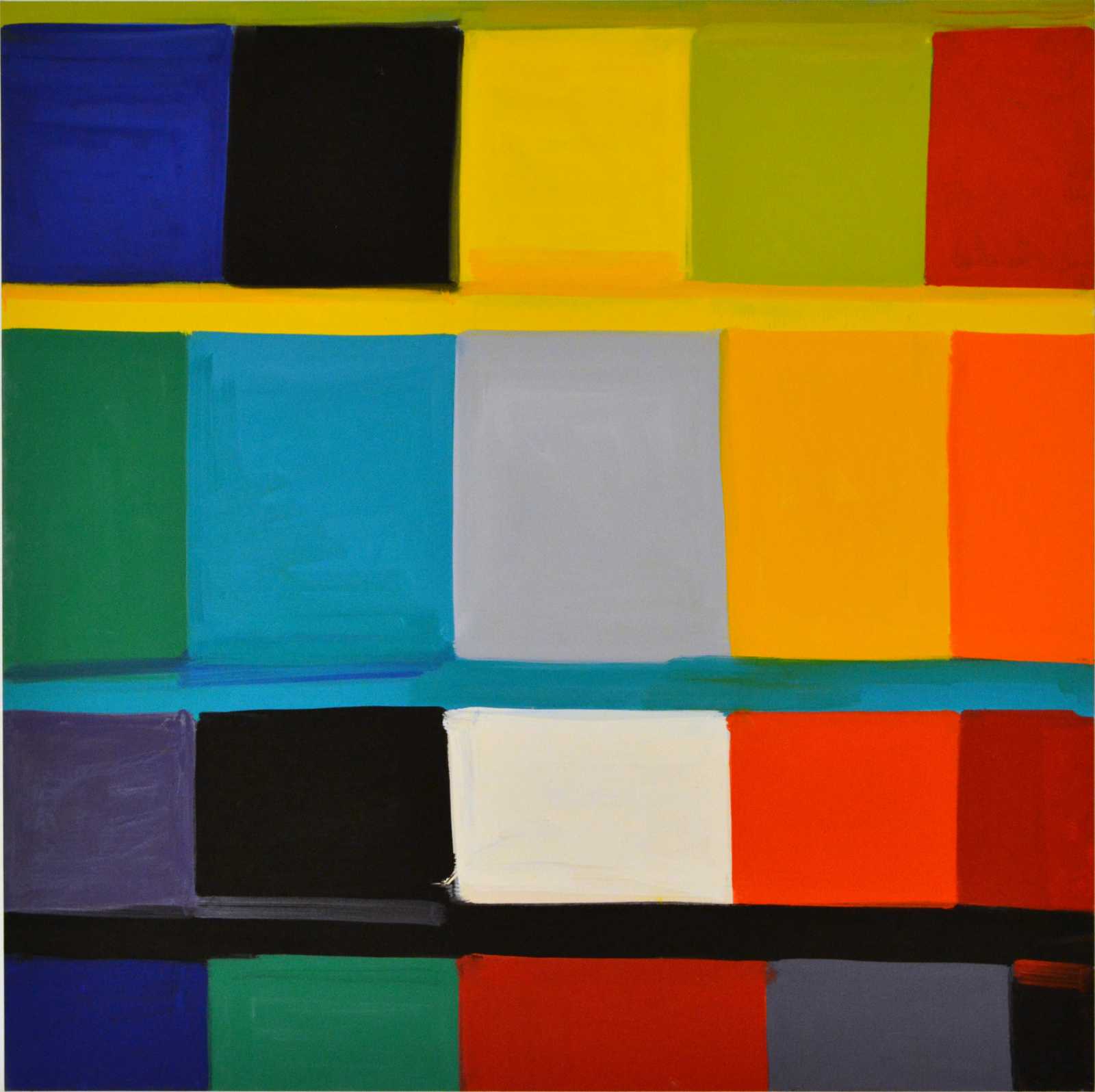Artworks of the Week
Adolph Gottlieb
Born in New York, Adolph Gottlieb studied at the Arts Students League in 1920-21, then traveled to Europe and lived briefly in Paris. After returning to New York, he resumed his art studies and by the early 1930s had formed lifelong friendships with other artists including Barnett Newman, Mark Rothko, Milton Avery, and John Graham.
In the 1940s, Gottlieb developed his visual language that consists of personally invented hieroglyphic and emblematic signs contained within grid-like matrices. This evolved into his Imaginary Landscapes and the Bursts in the 1950s, the work associated with first-generation Abstract Expressionism for which he is best known. This work exemplifies the “burst” painting due to the explosive or radiant quality of the two paint passages set in opposition, one above the other. Gottlieb repeated this particular formulation many times, with a red disk floating above a freely painted patch of black, conveying a sense of cosmic phenomena—celestial forms floating in limitless spaces.
Adolph Gottlieb (American, 1903-1974), Red Halo, 1960, ink and pastel on paper, 30 7/8 x 22 3/8 inches. Gift of Gwendolyn Weiner, 109-2010.
Stanley Whitney
For over fifty years Stanley Whitney has been exploring the formal qualities of painted, saturated color. Born in Philadelphia, Whitney graduated from Kansas City Art Institute and Yale University. This academic training is reflected in his knowledge of art historical traditions of color, from Renaissance painting to Matisse cut-outs. Whitney cites the improvisational nature of jazz as inspiration, specifically trumpeter Miles Davis. For the artist, the act of painting and color selection depends on continual attention to tone, rhythm, and harmony, much like that of a musician.
In this painting, Whitney divides his canvas into a grid, filling each square with vibrant hues that complement and offset the surrounding colors. As a colorist working in an abstract language, Whitney uses the same structure repeatedly, dividing his canvas into four bands of boldly imperfect blocks separated by three deliberate horizontal stripes. These loosely latticed compositions juxtapose individual hues, textures, and tonal values, with pure colors that can vibrate—akin to the visual effects in abstract color field paintings by Mark Rothko, or the artistic traditions of patchwork quilting.
Stanley Whitney (American, born 1946), Blue Meets Yellow, 2011, oil on canvas, 72 × 72 inches. Gift from the Collection of Stephen Simoni and John Sacchi in honor of Donna J. MacMillan, Chair of the Board of Trustees, 14-2012.


